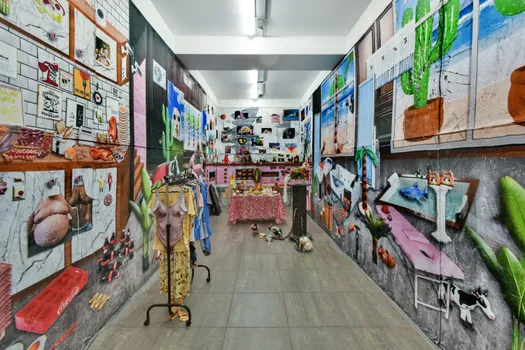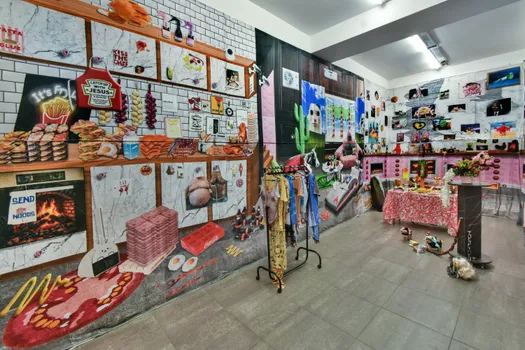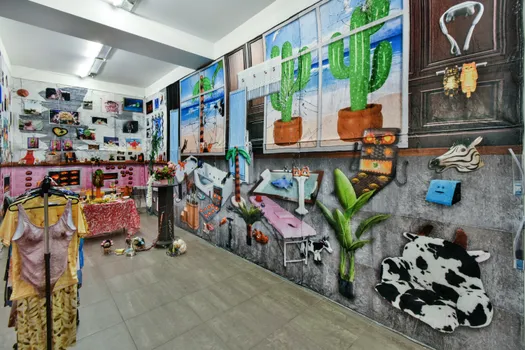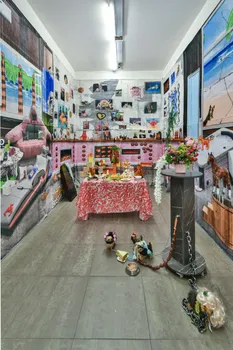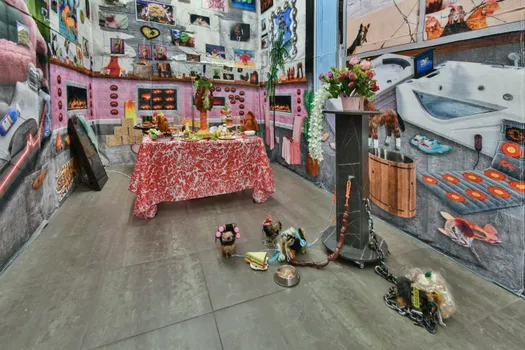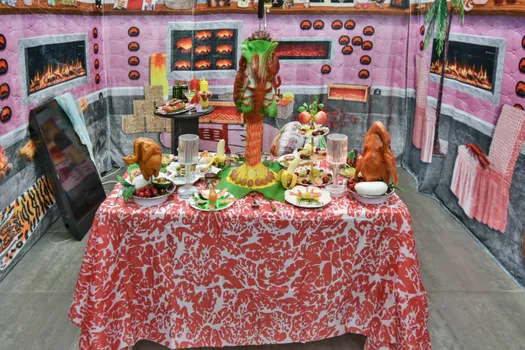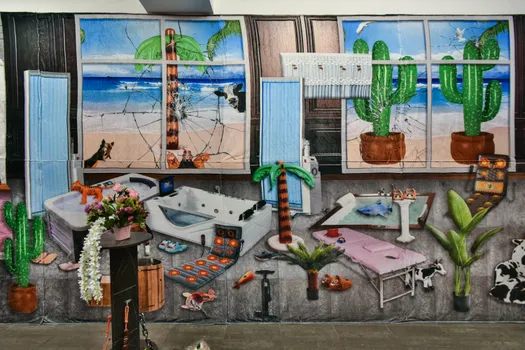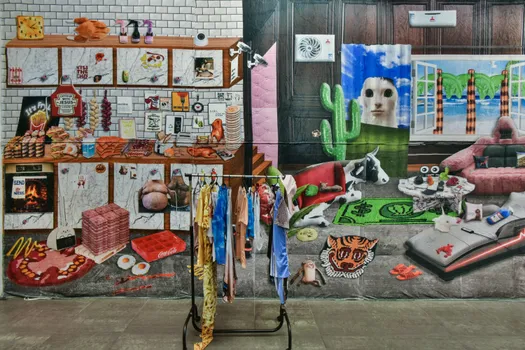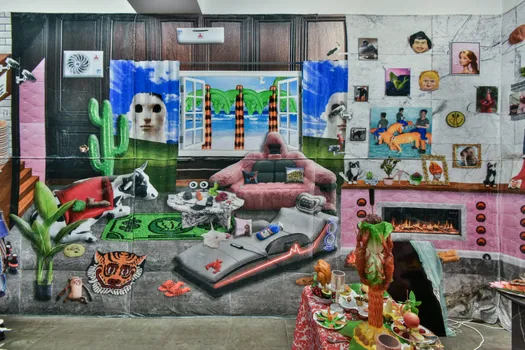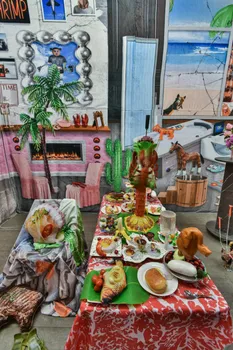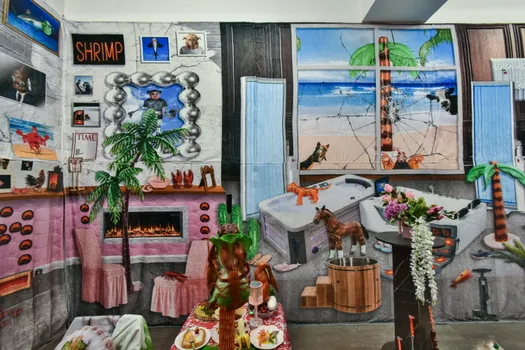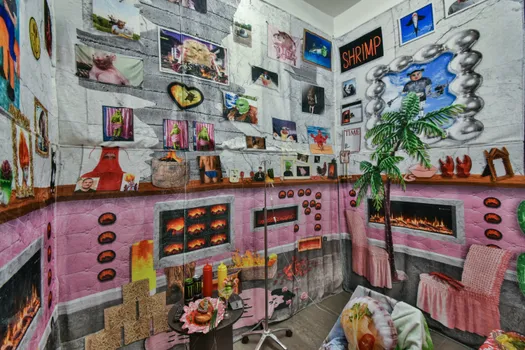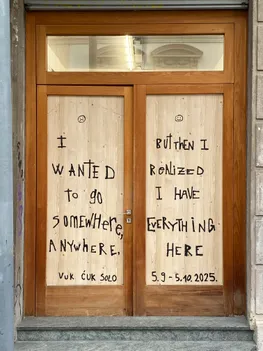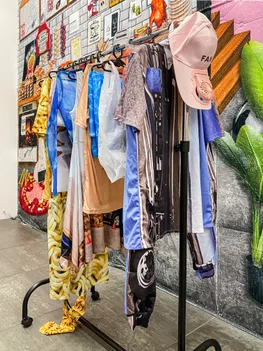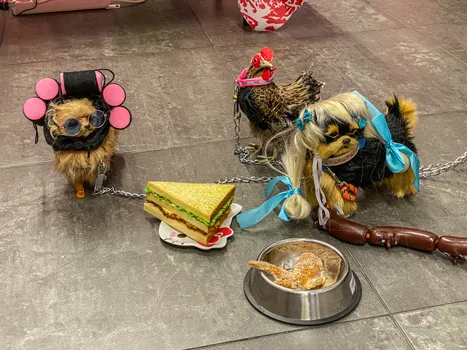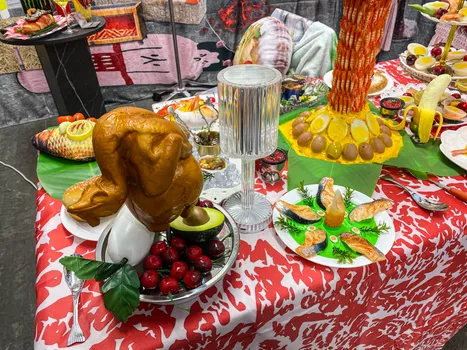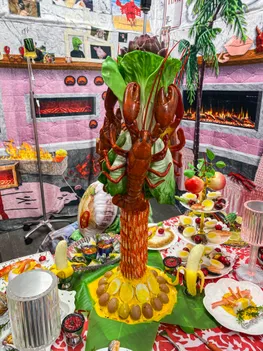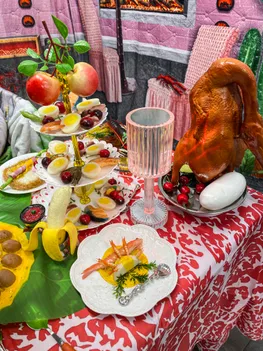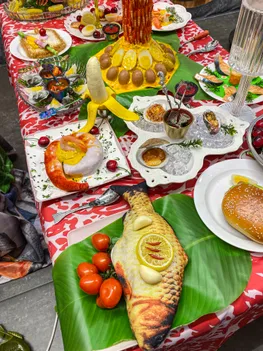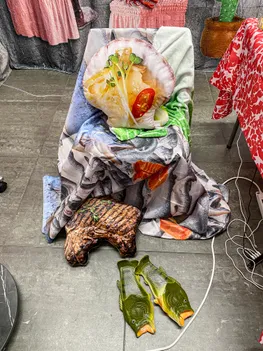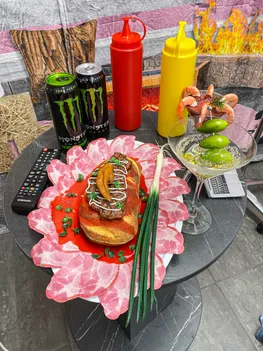After some time, Galerija Zvono once again presents the work of artist Vuk Ćuk. His new cycle of works, gathered under the exhibition title “I Wanted to Go Somewhere, Anywhere, But Then I Realized I Have Everything Here,” represents a continuation of his previous preoccupations, building on earlier artistic phases while simultaneously opening space for an entirely original expression. The artist aimed to create a kind of homage to his first solo exhibition, held twelve years ago, while also incorporating aspects, motifs, and changes from each of his earlier creative stages.
Ćuk deliberately shifts the boundaries of how we perceive an artwork, showing his capacity for constant innovation and the transformation of artistic expression into fresh and surprising forms.
The artist turns his attention to global online shopping platforms such as AliExpress, searching them in detail while simultaneously demystifying and analyzing the logic of contemporary consumer society. Each year, more plastic objects are produced than there are people on the planet, and most of them are designed to last as briefly as possible, fueling constant demand for new purchases. The list of bizarre products seems comical (a cactus that moves and talks, costumes for animals, plastic food…), yet it reveals the serious mechanisms of an endless spiral of consumption. Objects produced in tens of thousands, often without clear purpose, are transported worldwide, sold, and very quickly discarded. The entire world appears as one vast uniform catalog. This cycle of consumption, driven by platform algorithms and impulses to buy, never ends, as new objects, new offers, and new desires continuously appear. AliExpress becomes a symbol of algorithmic capitalist order, while its products represent a culture where simulation has become more important than reality—a series of functionless, identity-less copies. This raises the question: is the buyer a subject, or merely a reflection of consumer impulses that drive the endless spiral of consumption?
Ćuk consciously selects and orders various objects from AliExpress that are trivial, aesthetically questionable, or functionally meaningless—plastic salad, lobster, eggs, chicken, hot dogs, sandwiches, among others—and recontextualizes them as objects of artistic meaning. The process of searching, ordering, and waiting for the products to arrive becomes an integral part of the artistic process. He then “serves” these plastic objects on a table, carefully arranging them into an “AliExpress feast,” even equipping them with a rotation mechanism. In this way, he creates an installation—a simulated banquet that questions the boundaries between consumerist waste and objects of artistic value, provoking reflection on everyday rituals of consumption. Through this approach, Ćuk establishes a dialogue with the tradition of readymade art, infused with humor and irony.
Consumer iconography becomes part of the exhibition in another distinctly authentic way. A series of digital collages printed on textiles—specifically blankets—are also on display. The artistic process begins again with selecting a variety of AliExpress objects such as plastic plants, animals, aprons, massagers, plastic fireplaces. These are collaged in Photoshop and then printed on blankets, themselves also sourced from the platform. Bright colors and bold contrasts create strong visual dynamics, while the choice of imagery affirms the aesthetics of the trivial as a valid form of artistic expression. Through visual overload and irony, Ćuk exposes the mechanisms of mass production where algorithms dictate desires and shape perception. By replacing canvas with blankets, the artist pushes against established artistic conventions and adds a subversive dimension to his work.
Vuk Ćuk transforms “waste”—plastic and blankets—into works of art, encouraging the viewer to reflect on their own consumer habits and their impact on our shared future and environment. With this exhibition, he demonstrates that the boundaries between a nonfunctional object and a work of art are not strictly defined, but are instead shaped through the artist’s creative intervention.
Art historian
Anđela Rokvić Vasić
